

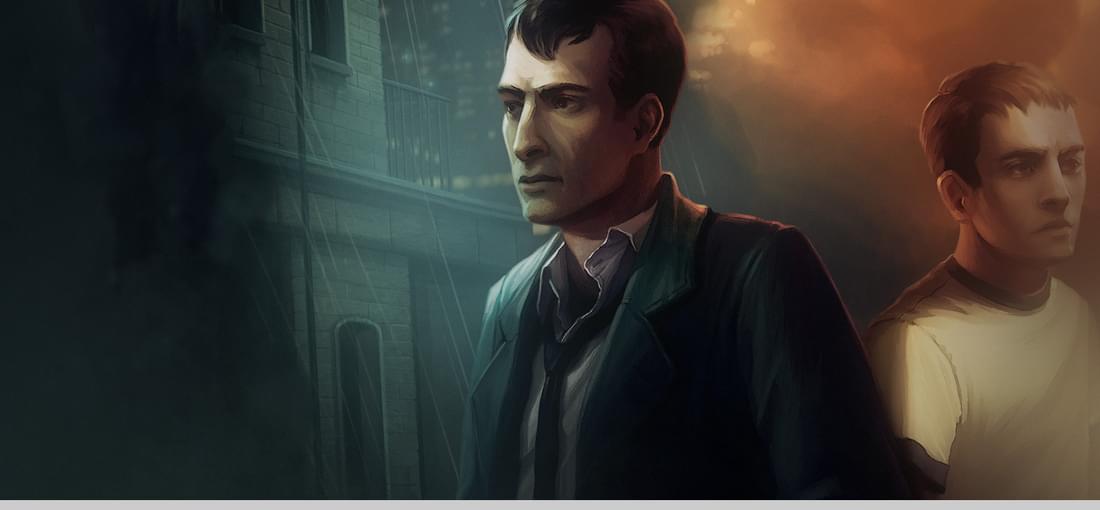
'Gemini Rue' is a point-and-click adventure game that was written and designed by Joshua Nuernburger. In the game, you play as Azriel Odin and Delta-Six. The former is a former assassin and the latter is a prisoner who just had his memory wiped as part of rehabilitation. Azriel and Delta-Six's storylines, although separate, will inevitably converge. For an indie game, in which the art, animation and programming were all done by Nuernburger himself, its overall quality is pretty close to professional. The noir and dystopic future tones of the story are well complimented by the appropriately drawn and animated settings. The puzzles are logical, borderline too easy in parts. The voice acting is also well done, though may be amateurish at times, but is nothing laughable. All in all, these elements are surprisingly good for an indie title. Still, the game's flaws can hard to ignore. For instance, the point-and-click interface is clunky, but serviceable. The graphics can be muddy in some parts, making clickable objects hard to detect. In spite of its flaws, 'Gemini Rue' is an indie title is a gem that, with a bit of polish here and there, could have rivaled the top Sierra adventure games.
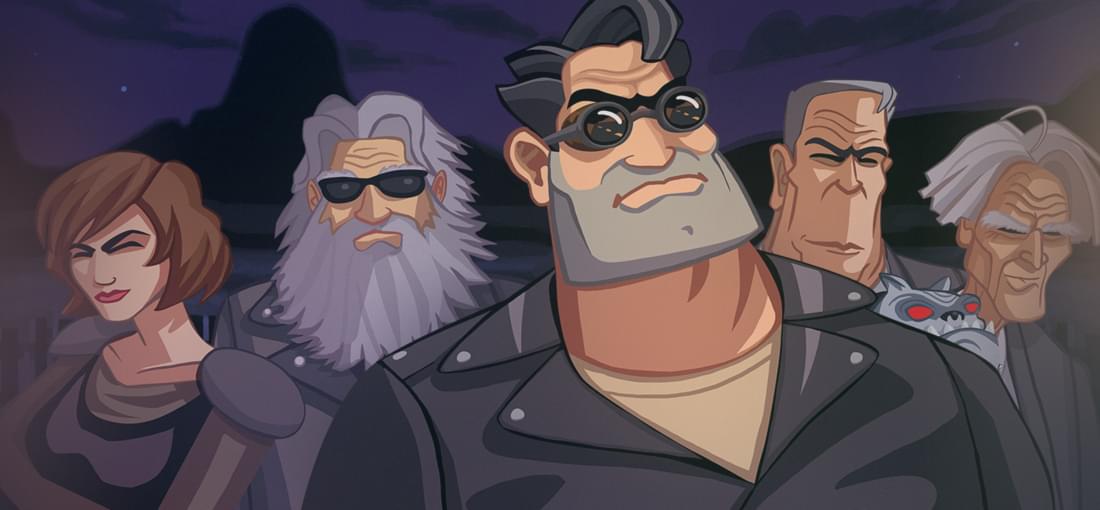
I missed out on 'Full Throttle' when it first came out, so to be able to play it now is a treat. 'Full Throttle Remastered' is a straightforward, no nonsense, linear adventure starring Ben, the leader of a biker gang. He and his gang were framed for the murder, and he had to go clear their name and seek vengeance. The puzzles in 'Full Throttle Remastered' were not particularly hard. New to the game, I finished the first half in about 2 hours because the solutions to puzzles were quite grounded and practical (i.e. nothing that requires moon logic or outlandish combinations of actions and objects). The second half was comparatively more outlandish puzzle-wise, and featured more action mini-games. While the mini-games fit the theme of 'Full Throttle', they did feel out of place in what seemingly a traditional point-and-click adventure game. The remastered graphics in 'Full Throttle Remastered' were very well done, adding crisp lines to the beautifully designed and drawn characters and locations. Although I am a fan of the remastered graphics in ‘Day of the Tentacle Remastered’ and ‘Grim Fandango Remastered’, I have mixed feelings about the new art in 'Full Throttle Remastered'. For more elaborate and expanded locales, like the penultimate setting in the game, the remastered graphics were an asset. However, for cutscenes and close-ups, the remastered graphics actually stripped away the grittiness of the original pixel art that befitted the game’s tone and style. This just goes to show how well the original art holds up over two decades later. Double Fine’s remastering work was not for naught though. 'Full Throttle Remastered' benefitted most from the remastered audio. The remastered music and dialogue sounded clean and sharp, and the sound of the motorcycles racing down the freeway was blaringly aggressive. Thankfully, one can choose to play this game with the original graphics, paired with remastered music and sounds, to achieve what I deem to be the best way to (re)experience this game. I completed 'Full Throttle Remastered' in about three hours with some help from a walkthrough for the second half of the game. If I did not get help, I would have clocked in four or five hours of game time in total. Given that, 'Full Throttle', as some reviewers had already pointed out, is not a long game. Considering how linear the game is compared to its LucasArts peers, it is hard not to feel something was missing in 'Full Throttle' – perhaps a couple of scenes or a few more puzzles. While I appreciated the lack of frills in the core game, part of me wished Ben’s adventure could have been a bit longer. Have no previous sentimental attachment to or nostalgia about the game, I feel 'Full Throttle Remastered' at its regular full price is not a good value. I paid just under $10 for the game during a sale, and felt I got a decent value for such a short, yet entertaining game. Those with a stronger sense of nostalgia about 'Full Throttle' may be willing to pay more. However, if you are like I, you may want to get this game when it is discounted.
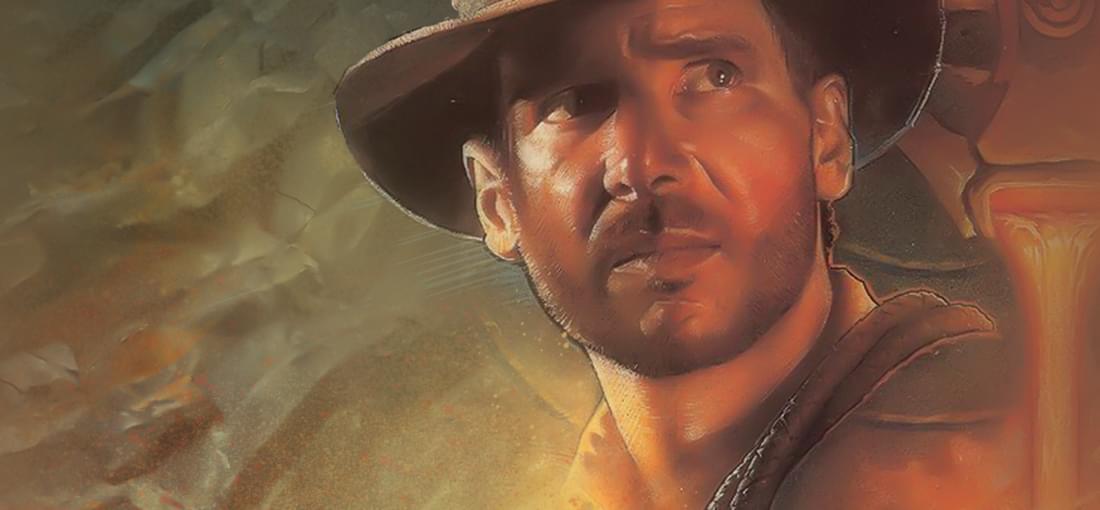
'Indiana Jones and the Fate of Atlantis' is the Indiana Jones movie that most people wish they got instead of 'Kingdom of the Crystal Skull'. (Admittedly, I actually didn't mind 'KotCS'.) 'Fate of Atlantis' is an exciting Indiana Jones adventure that spans the globe, with multiple ways to solve key puzzles. Dialogues are snappy and funny, and puzzles -- while obtuse and challenging at times -- were well designed. It's a shame that there has been no worthy follow-ups to this fantastic LucasArts game because the Indiana Jones franchise is ripe for more adventure games like this, Indiana Jones is an enduring icon, and seeing Harrison Ford age on the silver screen as Indiana Jones is unbearable.
It was only recently that I heard all the great buzz about the first 'Broken Sword' game, so I decided to give it a try. I played the Director's Cut first, and thought it was a great game overall, with excellent graphics, good voice acting, and a mature, engaging story that could rival its contemporaries from LucasArts. Although the game's ending felt rushed, and that the added story and puzzle contents were superfluous and inconsequential, it was a lot of fun to play the Director's Cut of 'Broken Sword'. However, the Director's Cut is a double-edged sword (pun intended). I expected the new content to blend in with the old as seamlessly as possible, but it was not so. Dave Gibbon's new artwork was gorgeous, but it did not match the style of Mike Burgess, the original character animator. I was also quite enthused to play as Nico, but her story turned out to be not important to how the rest of the adventure plays out. I was hoping I would get to switch between George and Nico throughout the Director's Cut, but Nico's adventure was only tacked on at the beginning. In fact, presenting Nico's adventure as the prologue also ruined the original game's more impactful opening. The new puzzles? Well, they were alright, but one puzzle was so poorly designed that you literally had to guess the solution. At the very least, I expected the old content to be remastered to match the quality of the new. Yet, the newly recorded dialogue stood out like a sore thumb because of different audio quality. The old cutscenes looked dated and grey, compared to the brighter tones of the new ones. The discrepancies between the old and the new were so obvious that I wished I had just played the original. Thankfully then, the original 'Broken Sword' game is packaged with the Director's Cut, so it can still be enjoyed. I must say that the Director's Cut does scale the graphics up to be better enjoyed on modern computers. Despite my negativity, I am still recommending this game. While the Director's Cut could have been much better, it's still very fun. At the very least, now you know to play the original game first before checking the Director's Cut out.
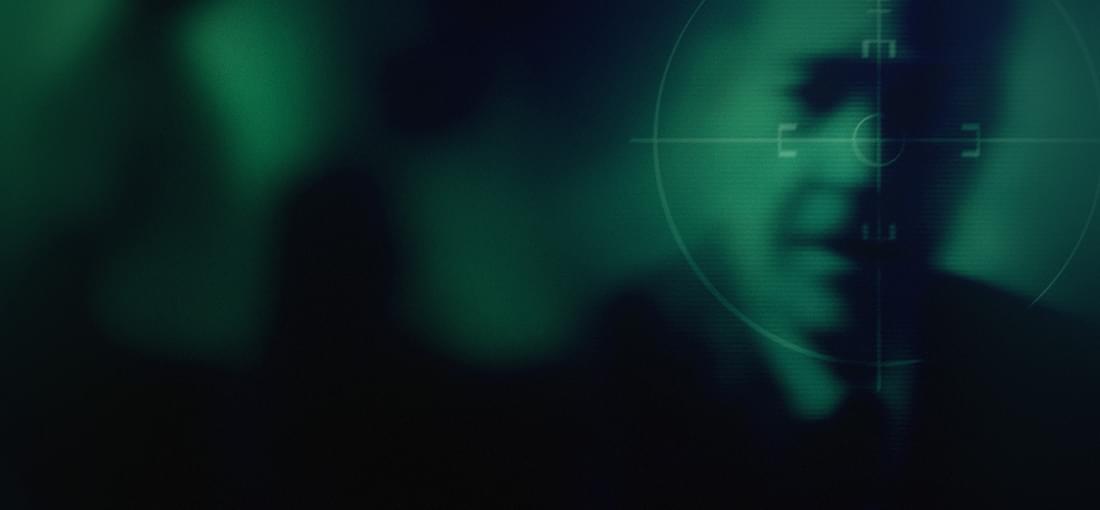
What coincidence that given today's political climate that I played 'Spycraft: The Great Game' for the first time. For an FMV adventure game, 'Spycraft' actually features good acting. Using real sets and minimal green screens, the game has an authentic feel that makes you feel like you're part of the political spy thriller movies in the 1990s. The story is well written and exciting, with some nice twists and revelations. Some plot holes can be overlooked given how the story unfolds. In 'Spycraft', you are a CIA analyst (akin to Jack Ryan from Tom Clancy's novels) assigned to a mission that has multiple objectives. Throughout this game, you sift through intelligence via a series of puzzles that are like mini-games. There is a nice variety of puzzles, ranging from analyzing images and audio recordings, decyphering encrypted messages, compositing suspect images, and poring through intelligence for clues. 'Spycraft' manages to make data analyses fun and extremely rewarding. 'Spycraft' requires the player to be observant and smart, and it rewards for being so. This may be a game of the 1990s, but it holds up and still plays pretty well over 25 years later. Fans of 1990s political thrillers, adventure games, and logical puzzles are likely to find 'Spycraft' a compelling piece of entertainment.
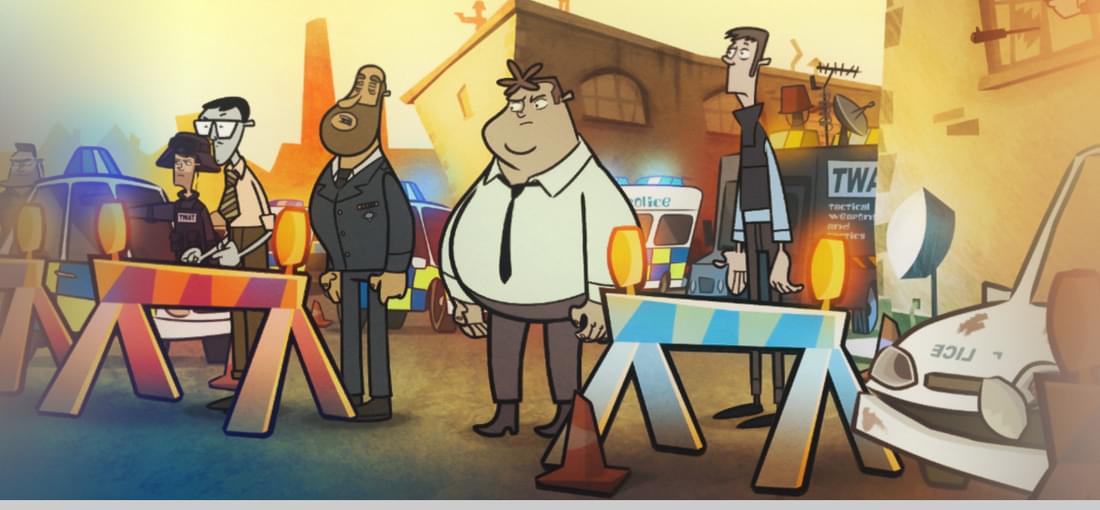
'Hector: Badge of Carnage' is a fun, simple adventure game that allows you to play the game with one hand, and grab for some crisps or a pint with the other. You play as Detective Inspector Hector, a vulgar, cynical police officer, assigned to talk down a terrorist in a hostage situation that ultimately turned into a bigger case. You also get to play as his good natured simpleton partner, Lambert, in Episodes 2 and 3. Addition of Lambert to the gameplay adds a bit of challenge and variety to the game, but by the end of Episode 3, 'Hector' pretty much delivers all that it can. Perhaps with exception to 2 or 3 puzzles that bookend this game, the puzzles in 'Hector' are quite simple. Still, the three episodes provided me with about 9 hours of playtime and plenty of British humour for me to enjoy. If you are easily offended by crude humour, however, 'Hector' is not the game for you. This game does not hold back with the gross, impolite stuff, so if the idea of using a vibrator as a key component to solve an in-game puzzle, 'Hector' is not the adventure game you should be playing.

MEAN STREETS: Back in 1989, 'Mean Streets' was as close to a cinematic video game experience as we could get. Seeing the game box cover rendered exactly as it was on screen in 256-colour VGA graphics, and hearing snippets of actual human speech and synthesized music playing through my PC speakers were simply astounding. I didn't know it at the time, but much of the visual design in 'MS' was inspired by, if not ripped off from, 'Blade Runner'. From Murphy's fashion sense to his hovercar to his image-enhancing video phone, 'MS' was pretty shameless in replicating the movie's style. Despite knowing this today, the rip-off doesn't bother me because 'MS' is a solid, hardboiled mystery or futuristic pulp fiction at its core. What makes 'MS' not so great now is that it was a poor mix of adventure, interrogation, flight simulation, and side-scrolling action games. While the first two worked well together, the latter two were wholly unnecessarily. The graphics and sounds for the flight simulator did not mesh well with the rest of the game, and the side-scrolling shooter was half-baked and simplistic. But back in the day as a teen, I admittedly thought this mix of genres was ingenious. The joy of playing 'MS' was unravelling the mystery bit by bit. Over 15 years later and now an adult, I still enjoy the "pulpiness" of this game, and would recommend it in a heartbeat. MARTIAN MEMORANDUM: On the other hand, I was disappointed by 'Martian Memorandum'. Okay, it was not that bad, just mediocre compared to its contemporaries like 'Conquests of the Longbow', 'Space Quest IV' and 'Monkey Island 2', to name a few. This game obviously took visual inspirations from Paul Verhoven's 'Total Recall', but did it really need to use so much reddish brown colours? The game strived for realism visually, but a lot of the time, I had no idea what I was looking at, let alone find my character on screen. It was hard not to fault 'MM' when 'SQ4' managed to strike a balance between its use of reddish hues and making manipulable objects obvious. In truth, I actually found the colours, graphics, speech and music in 'MS' more pleasing. Plus, the game interface in 'MM' didn't get better, if not got worse. Despite being a point-and-click adventure game, it was perplexing that I needed to select the “MOVE” command, and not “USE”, to turn on or off a switch. Also, why would I need to first click the “GOTO' command to exit the screen when walking off it would have sufficed? Thankfully then, 'MM' was a more focused game without the unnecessary flight simulator and side-scrolling action bits. Still, you would think that the developers would have spent more time polishing 'MM' up. On the contrary, game backgrounds were mostly static, and character animations were few. When opening or moving an object, your character would stand still and complete the action even though he was physically far away; yet, you would need to move him close to the object first to pick it up or use it. This lack of detail was disappointing, especially when Sierra and LucasArts had done better during that time. 'MM', while a serviceable detective adventure game, just couldn't compare to other better made adventure games at the time. The story was not too bad, but some puzzles could be obtuse though not requiring "moon logic" (or is it "Martian logic"?). Give it a try if you have time, but it doesn't get a hearty recommendation from me.
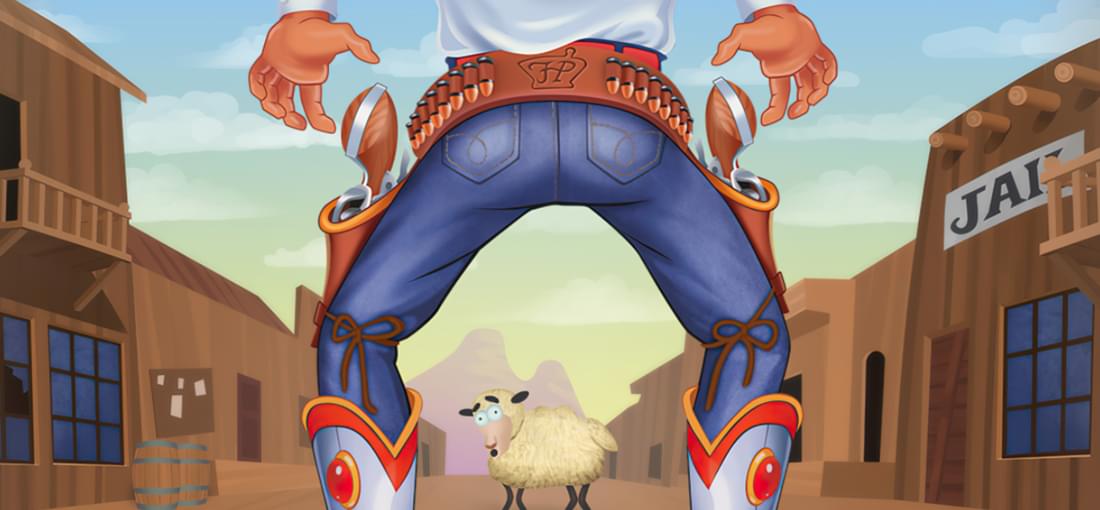
'Freddy Pharkas: Frontier Pharmacist' is a hidden gem among Sierra's adventure game catalogue. It never quite caught on like the 'Quest' games did, including 'Leisure Suit Larry', even though it was co-written by Al Lowe himself. In fact, after 'Leisure Suit Larry: Love for Sail', I would say 'Freddy Pharkas' is my favourite Al Lowe game. 'Freddy Pharkas' is easy and short compared to its Sierra adventure game counterparts, but it is no less fun. In fact, the puzzles are mostly logical, though the last act can be outlandish and more action oriented. Overall, it is a good western parody with puzzles that are fresh and well implemented in the world of 'Freddy Pharkas'. It's a shame that this game never got a sequel that it so well deserves.
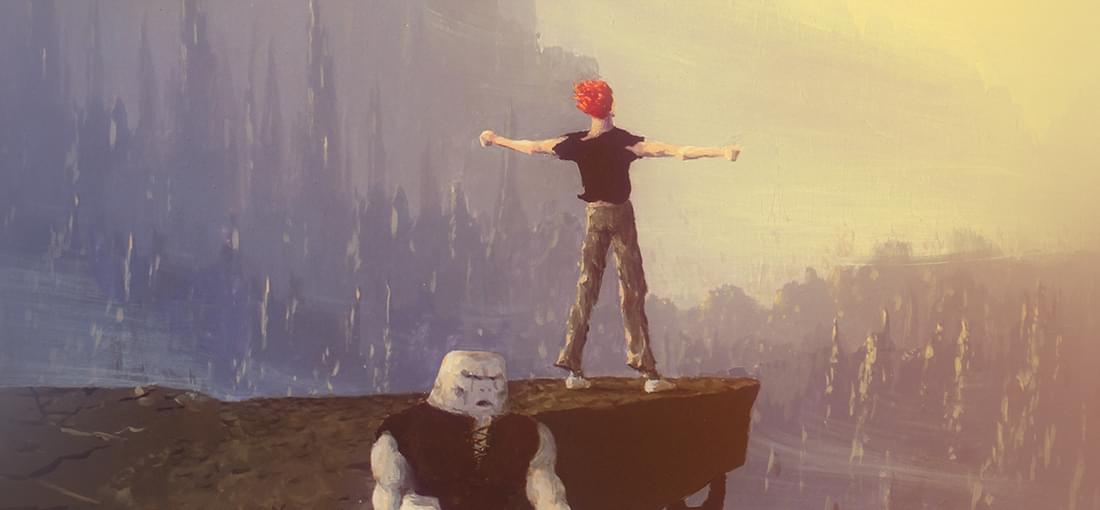
I've never played 'Another World' until this 20th anniversary remastered release, and I'm glad I did! While the original lower resolution graphics can be toggled at the simple press of a key, I much preferred playing the game with its high definition graphics. The richer colour palate and smoother vector art add to the visual experience, while adhering to the simplistic artistic style of the original. 'Another World' is challenging, even by modern standard. The gameplay relies on much trial and error, as well as precise timing on the player's part. Thankfully, save points are plenty enough that not much progress is usually lost upon a death. The game is actually quite short overall, but the challenging gameplay extends the gameplay time. The feeling of outsmarting the enemy is rewarding, however, and just urges players to keep going.
'Samorost 2' is a beautiful game, filled with imaginative images, a soothing soundtrack, whimsy and delight. As much as I enjoyed these qualities, it is a very short game, possibly expanded by the challenge imposed on you by its timing puzzles. For such a brief (yet intricately made) Flash game, I find it a tad bit expensive for its original price, but you may want to check it out if it is discounted.